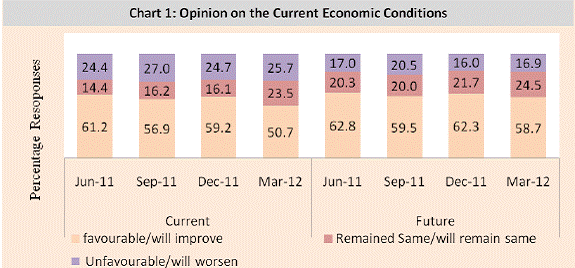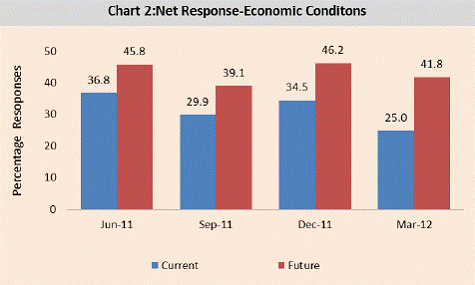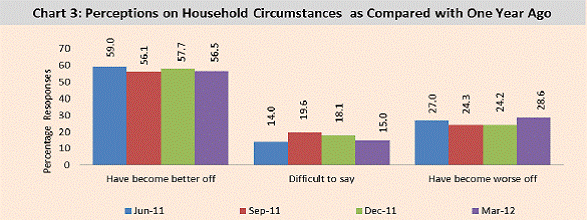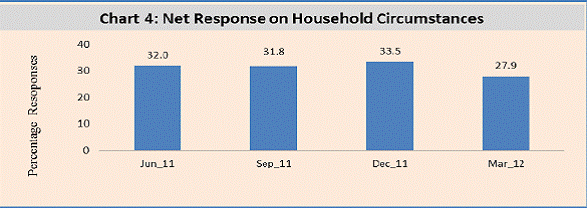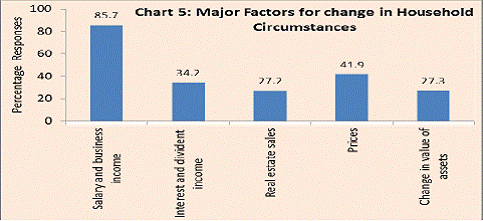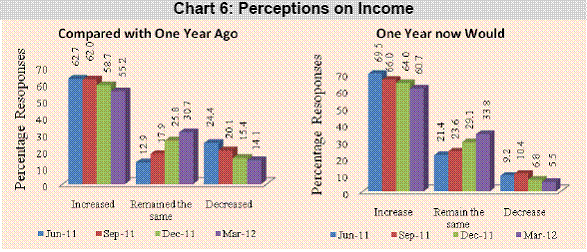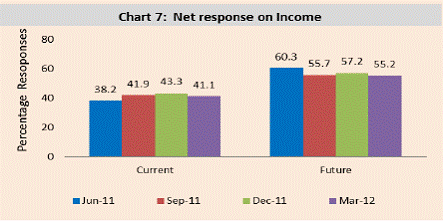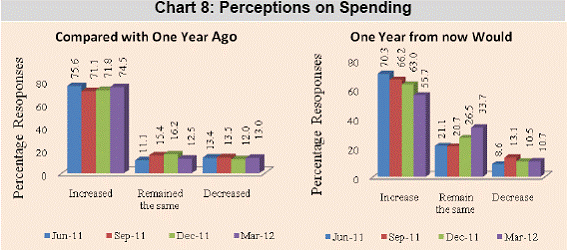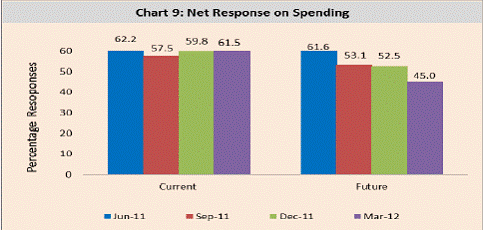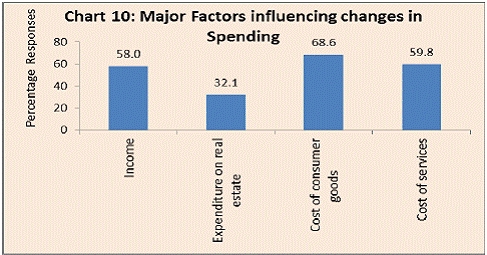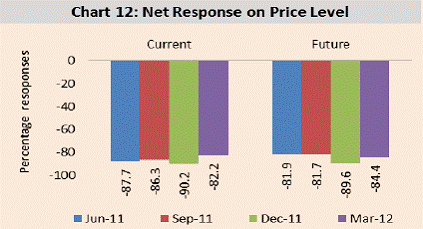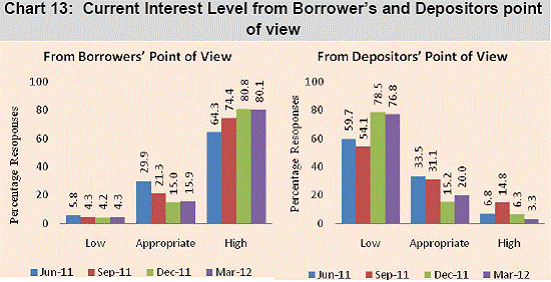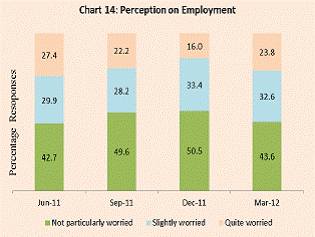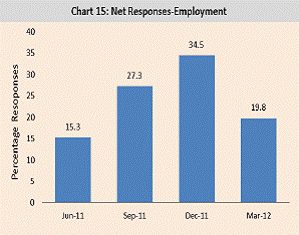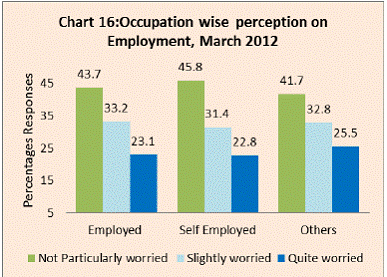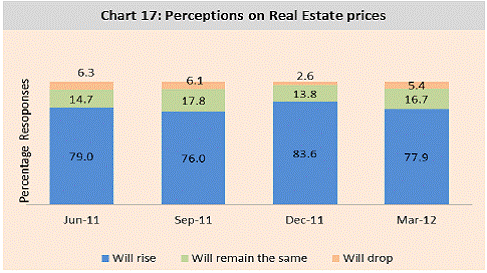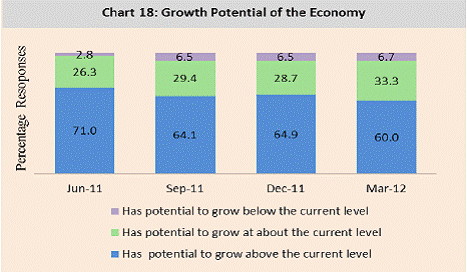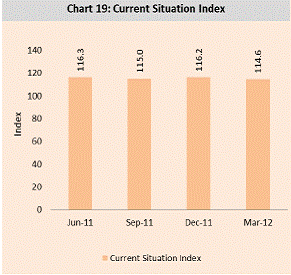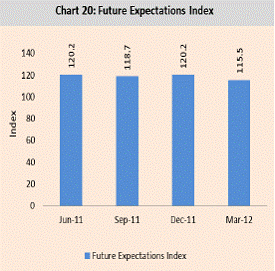Consumer Confidence Survey: March 2012 - ਆਰਬੀਆਈ - Reserve Bank of India
Consumer Confidence Survey: March 2012
This article presents the salient findings of the Consumer Confidence Survey conducted in March 2012, the 8th round in the series.It gives an assessment of the consumer sentiments of the respondents based on their perceptions of the general economic conditions and their own financial situation.The assessments are analysed in two parts,viz.,current situation as compared with a year ago and expectations for a year ahead. The survey indicates that, households’ perception about current economic conditions and expectation for next one year has decreased in terms of net response; however, more than half of the respondents continue to feel that the current economic conditions and future prospects are favourable. Majority of respondents perceived that household circumstances have become better, though the proportion of respondents reporting worsening of current household circumstances has increased as compared with the previous round. More than half of the respondents reported an increase in income, but this proportion has been declining over the last four rounds. A similar decreasing trend is observed in case of expectation of increased income in the next year; this may have also affected further spending intentions. I. Introduction The change in consumer confidence has the potential to affect real economic activities through the changes in business sentiments. The Reserve Bank has been conducting a Quarterly Consumer Confidence Survey for obtaining the qualitative information,since June 2010. The 8th round of the survey was conducted in March 2012. II. Sampling Design The survey covers six metropolitan cities, viz., Bangalore, Chennai, Hyderabad, Kolkata, Mumbai and New Delhi.Each city is divided into three major areas and each major area is further divided into three sub-areas. From each sub-area, about 100 respondents are selected randomly. For each round of survey 5,400 respondents are selected (900 respondents from each city). For the current round, out of the total 5,400 survey schedules, 5,352 schedules were found to be suitable for the further analysis. III. Structure of the Survey Questionnaire* The survey schedule consists of qualitative questions pertaining to impression about economic conditions, views on household circumstances, perceptions on price level, perception on employment prospects, developments in real estate prices and views on growth potential of the Indian economy. IV Survey Results: Key Highlights IV.1 Economic Conditions
IV.2 Household Circumstances
Note: As respondents may report multiple factors,total of percentage relating to factors may be more than 100. IV.3 Income
IV.4 Consumer Spending
Note: - As respondents may report multiple factors, total of percentage relating to factors may be more than 100.
IV.5 Price Level
IV.6 Perceptions on other Macroeconomic Indicators IV.6.1 Interest Rates
IV.6.2 Employment Conditions
IV.6.3 Future Developments in Real Estate Prices
IV.6.4 Growth Potential of the Economy
IV.7 Current Situation Index and Future Expectations Index
* The survey schedule and methodology for constructing the confidence index were published in December 2011 issue of RBI Bulletin. |











